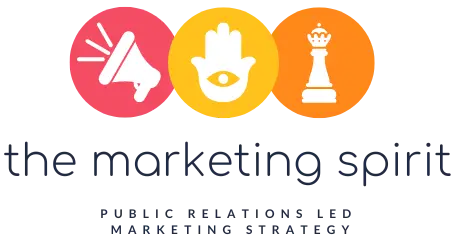Using ChatGPT to brainstorm topics for your blog can not only save you time, but it can also tap into a wealth of knowledge and creativity that will help you come up with fresh and engaging content ideas.
ChatGPT can be a great resource to help you write your blog in a number of ways. With that said, use ChatGPT as a starting point: ChatGPT can help you generate ideas, but it’s up to you to develop them further. Use the ideas generated by ChatGPT as a starting point for your own creative thinking and exploration.
QUICK GLIMPSE
If you’re struggling to come up with ideas for your blog, ChatGPT can help! Just ask a general question related to your blog topic, and ChatGPT can generate some ideas for you to explore further.
For example, if you wrote a blog about marketing, you can ask a specific question or provide some context for your blog. Here are a few examples:
- “Can you suggest some new and innovative marketing topics I can write about on my blog?”
- “What are some key marketing trends that I should be discussing on my blog?”
- “Can you help me come up with ideas for blog posts that focus on practical marketing advice for small businesses?”
- Once you’ve provided some context for your blog and what you’re looking for, ChatGPT can generate a response that can help you brainstorm new ideas and topics to explore. Be sure to ask follow-up questions and prompts to help guide the brainstorming process and get more specific suggestions.
For example, if ChatGPT suggests a particular marketing trend or topic, you can ask for more information on how it impacts small businesses or for examples of how other bloggers have covered it successfully. By collaborating with ChatGPT, you can generate a wide range of ideas and insights to help you write compelling and informative blog posts on marketing topics.
DEEP DIVE
Here are some steps you can follow to use ChatGPT to help you brainstorm topics for your blog:
Topics
Identify the general niche or topic area of your blog. For example, if your blog is about cooking, your niche is food and recipes.
Questions
Once you’ve identified your niche, start by asking ChatGPT open-ended questions related to your topic. For example, if your blog is about cooking, you can ask “What are some unique recipes I can try at home?” or “What are some of the most popular cooking techniques?”
Get more specific
You can go further by varying your questions: Try asking ChatGPT a mix of open-ended and specific questions to get a wide range of ideas. For example, you can ask “What are some general tips for beginners in my niche?” and then follow up with “What are some advanced techniques for experts in my niche?”
ChatGPT will generate a list of potential blog topics based on your question. Read through the responses and choose the ones that you find interesting and relevant to your blog.
If you need more specific ideas, try asking ChatGPT more focused questions, such as “What are some vegetarian recipes I can make for dinner?” or “What are some tips for baking perfect bread?”
Don’t limit yourself: Don’t be afraid to ask ChatGPT for ideas outside of your niche or topic area. You may be surprised at the creative connections you can make.
Types of Blog Articles
Experiment with different approaches: Try approaching ChatGPT from different angles to see what ideas you can generate. For example, you can ask ChatGPT for lists of ideas, how-tos, how-to guides, case studies, interviews, opinion pieces or thought-provoking questions.
Revisit old posts: Go back through your old posts and see if there are any topics that you can revisit or expand upon. ChatGPT can help you come up with new angles or approaches to old topics.
Trends
Consider trends: Ask ChatGPT about trending topics in your niche. For example, if you have a beauty blog, you can ask “What are some emerging beauty trends this year?” or “What are some of the most popular skincare products right now?”
Stay up-to-date: Keep up with the latest trends, news, and developments in your niche to stay relevant and interesting to your readers. ChatGPT can help you stay on top of the latest developments and generate ideas for timely and relevant posts.
Audience
Focus on your audience: Think about your target audience and what they may be interested in reading. Ask ChatGPT for ideas that specifically cater to your audience’s needs, interests, and pain points. For example, if you have a parenting blog, you can ask “What are some tips for managing work-life balance as a new parent?” or “What are some fun activities to do with toddlers at home?”
Organize
As you review the generated responses, take notes and organize the ideas by relevance, uniqueness, and potential interest for your readers.
Keep a list of your ideas: As you generate ideas with ChatGPT, keep track of them in a list or document. This will help you keep track of your ideas and come back to them later when you’re ready to write.
Analytics
Keep an eye on your analytics: Keep track of which topics and posts are most popular on your blog, and use this information to generate new ideas. You can also use ChatGPT to help you analyze your analytics data and come up with ideas for improving your content.
Research keywords: Use tools like Google AdWords or SEMrush to research keywords related to your niche. This can help you generate ideas for topics that people are actively searching for.
By following these tips, you can make the most out of your brainstorming sessions with ChatGPT and come up with a wide range of fresh and engaging ideas for your blog.
Remember that ChatGPT is a machine-learning model that can provide you with a variety of useful suggestions and insights, but it’s up to you to use your own judgment and creativity when incorporating those suggestions into your writing. With practice and persistence, you’ll be able to use ChatGPT to help you write better blog posts and engage your readers more effectively.

